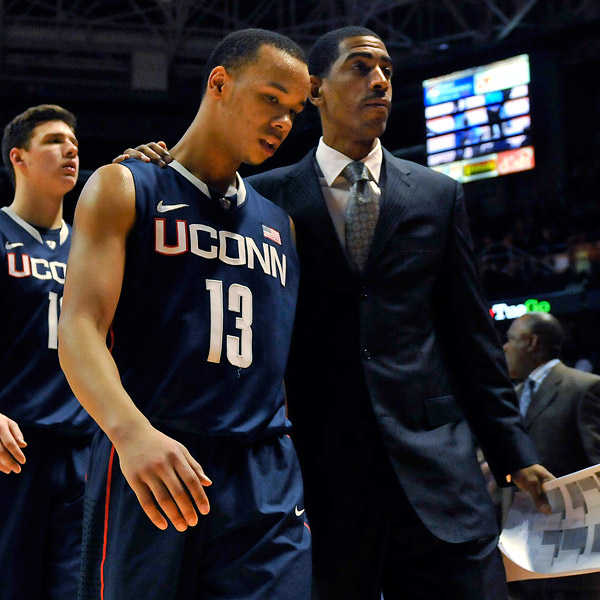Where Do UConn, Cincinnati, USF Turn After Loss of Catholic Seven?
Posted by Will Tucker on December 24th, 2012Last week, the Catholic Seven quashed any hopes that the Big East could reconstitute in the image of its former self. In a final stroke of tragedy, that group seems to have absconded with the lucrative television deal that evaded Mike Aresco for months. All of the sudden USF, Cincinnati and Connecticut look to be the only programs in the current Big East standings that won’t head for greener pastures in 2014-15. So how do these Big East incumbents position themselves in the new conference landscape? Do they control their own fate, or are they destined to wait patiently in the widow’s walk for their own realignment lifeboat to reach their shores?
UConn needs to set an example of stability by committing to Kevin Ollie (John Woike/Hartford Courant)
Memphis, UCF, SMU, Houston, and Temple are scheduled to fully integrate their athletic departments into the Big East next summer. Boise State and San Diego State already grace next season’s conference football schedules, but it now appears the Mountain West Conference has convinced them to steal a page from the TCU book of cold feet.
Outlook
Leadership at UConn and Cincinnati are still licking their wounds from their latest unsuccessful attempts to escape Big East entropy. Cincinnati is taking proactive measures already to make itself a more attractive candidate in the next round of conference expansion. Athletic Director Whit Babcock poached football coach Tommy Tuberbville from a decent Big 12 program and announced plans to update Nippert Stadium. Emails between administrative leaders illustrated a coordinated effort to flank Louisville and UConn for the most recent opening in the ACC, and UC had briefly flirted with the Big 12 the previous year. Cincinnati is only interested in the Big East insofar as it maintains an environment that will facilitate its exit as soon as possible: Namely, one that provides acceptable strength of schedule in basketball and football, and some enticing names on the home slate to attract a very fickle local fan base to attend games.










































